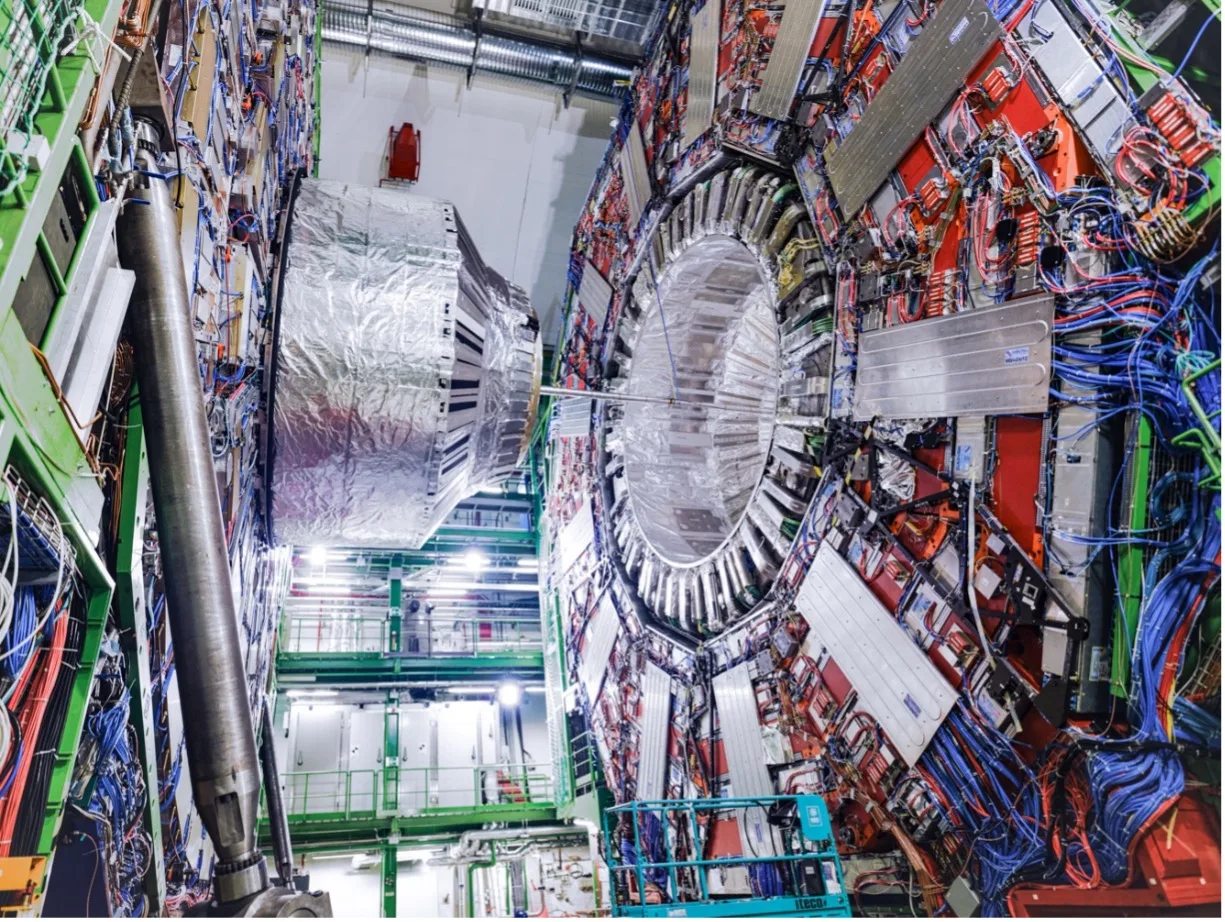The CMS experiment at CERN has made a precise measurement of the effective leptonic electroweak mixing angle, a key parameter of the Standard Model of Particle Physics. This result, presented at the Rencontres de Moriond conference, aligns with the Standard Model’s prediction and helps resolve a long-standing discrepancy between previous measurements made at CERN and the Stanford Linear Accelerator Center (SLAC). Patricia McBride, CMS spokesperson, highlighted the significance of this achievement, noting it demonstrates the potential for precision physics at hadron colliders, despite their challenging environment.
The CMS Experiment: A New Precision in Particle Physics
The Compact Muon Solenoid (CMS) experiment at CERN, the European Organization for Nuclear Research, has achieved a significant milestone in the field of particle physics. The CMS collaboration recently presented a measurement of the effective leptonic electroweak mixing angle at the annual Rencontres de Moriond conference. This measurement is the most precise of its kind performed at a hadron collider to date and aligns well with the predictions of the Standard Model of Particle Physics.
The Standard Model is the most accurate framework we currently have to describe the fundamental particles and their interactions. It has been successful in predicting the masses of the W and Z bosons, the top quark, and the Higgs boson before their discovery. These predictions, once confirmed, serve as consistency checks for the model, allowing physicists to probe the limits of the theory’s validity. Precision measurements of these particles’ properties also provide a powerful tool for searching for new phenomena beyond the Standard Model, often referred to as “new physics.”
The Electroweak Mixing Angle: A Key Parameter
The electroweak mixing angle is a crucial parameter in these consistency checks. It is a fundamental parameter of the Standard Model, determining how the unified electroweak interaction gave rise to the electromagnetic and weak interactions through a process known as electroweak symmetry breaking. This angle also mathematically links the masses of the W and Z bosons, which transmit the weak interaction. Therefore, measurements of the W, the Z, or the mixing angle provide a good experimental cross-check of the Model.
The two most precise measurements of the weak mixing angle were performed by experiments at the CERN LEP collider and the SLD experiment at the Stanford Linear Accelerator Center (SLAC). However, these values disagreed with each other, a discrepancy that has puzzled physicists for over a decade. The new result from the CMS experiment aligns well with the Standard Model prediction and may help resolve this long-standing discrepancy.
Precision Physics at Hadron Colliders
The CMS experiment’s achievement demonstrates that precision physics can be carried out at hadron colliders. The analysis had to handle the challenging environment of LHC Run 2, with an average of 35 simultaneous proton-proton collisions. This success paves the way for more precision physics at the High-Luminosity LHC, where five times more proton pairs will be colliding simultaneously.
Historically, precision tests of the Standard Model parameters have been the domain of electron-positron colliders, such as CERN’s LEP, which operated until the year 2000. Proton-proton collisions in the LHC are more challenging for such high-precision measurements due to huge backgrounds from other physics processes and the fact that protons, unlike electrons, are not elementary particles. Despite these challenges, the CMS experiment has achieved a precision similar to that of an electron-positron collider.
The Most Precise Measurement to Date
The measurement presented by CMS uses a sample of proton-proton collisions collected from 2016 to 2018 at a centre-of-mass energy of 13 TeV. The mixing angle was obtained through an analysis of angular distributions in collisions where pairs of electrons or muons were produced. This is the most precise measurement performed at a hadron collider to date, improving on previous measurements from ATLAS, CMS, and LHCb. This achievement marks a significant step forward in our understanding of the fundamental particles and their interactions.
External Link: Click Here For More

